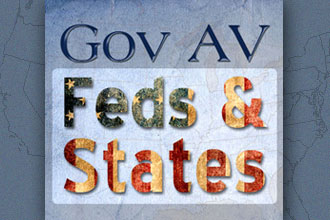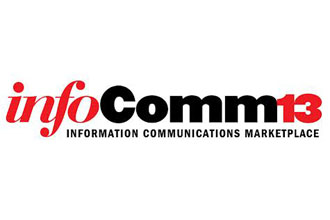Understanding Procurement Hiccups
 Disclaimer: These represent the opinion and experience of me personally and do not represent any specific policy, law or official guidance. Knowing the practices of each entity you are dealing with for any given situation is a critical part of how you will be successful working with the government. You will learn this through my column.
Disclaimer: These represent the opinion and experience of me personally and do not represent any specific policy, law or official guidance. Knowing the practices of each entity you are dealing with for any given situation is a critical part of how you will be successful working with the government. You will learn this through my column.
Have you had experience with selling or installing A/V services or equipment to the government? I suppose the simple answer is yes. Everyone in the A/V industry has stories to tell about their own experience with government procurements. Most often these stories can be depressing and discouraging to you and your business. In this inaugural column, two very similar, but different points of view will be shared to hopefully assist you better understand, “It’s the government …” really isn’t such a big bad animal after all. Always consider planning for the unexpected while participating in any procurement process, stick to the deadlines but anticipate anything could happen, and if your messenger gets lost or stuck in traffic trying to deliver your bid package – well, there is really nothing that can be done.
Federal Rule #1: One of the most basic principles of doing any procurement involving the government is completing the all the forms. If forms are provided, fill them out, COMPLETELY. It should never be assumed that your business will make it through various stages of a procurement process due to performance or references from other projects or any other qualifying factor, if your forms are not complete. Each submitted bid package is reviewed on individual merit, and depending on the evaluation criteria, it is scored appropriately.
Your business wouldn’t want its bid to be discarded for something as simple as forgetting your references. In order to make sure the forms are completely filled out prior to submitting a proposal for review, someone in your company must READ the entire procurement solicitation, as well as understand the entire terms and conditions that the procurement is associated with.
Federal Rule #2: What kind of procurement is it? Another critical component to understanding government procurements is what type of contract is being utilized. There are General Services Administration (GSA) Federal Supply Schedule contract, Solutions for Enterprise Wide Procurement (SEWP)contract and Blank Purchase Agreements (BPA), just to name a few. It would take up the rest of this column to cover the various types of contracting options that exist in the government. However, it is essential your business recognizes what type of contract it’s bidding on.
Federal Rule #3: Pay close attention on the differences between service contracts and equipment contracts. Service-based contracts can include both labor and products when the scope of work clearly defines how the products are integrated together to form one system. However, product-only scopes may include the complete system and not include any service related items. This is why the first two rules are so critical to the procurement process.
Federal Rule #4: Remember in grade school, when our teacher would remind us, “There is no such thing as a stupid question!”? It applies here. If you don’t ask, you won’t know. HOWEVER, remember sometimes answers take time. If after the initial review of a solicitation, you realize there might be a number of questions, nominate someone to handle managing your questions and submit all your questions at once. As noted, there is a deadline for you to submit all your questions, and no exceptions can be made.
Federal Rule #5: Be patient. Have you heard the phrase “the Legs of Government are turtle length”? Or seen a turtle that is 6’3”? Heck, No! But, you’ve probably seen a government procurement process that’s taken more than three months to complete. The type of procurement can largely affect the resources assigned within the government or the number of divisions and authority that need to sign off on the use of funding, let alone whether the technical solution meets the performance requirements and specifications. More important is whether the government employee assigned has multiple procurement solicitations he or she is managing.
What I have briefly shared with you is the tip of the iceberg about federal procurement and what I will help you navigate in the future through this column. The process and requirements at a state level are specific and different for each state. I know we have 50 here in the U.S. and we all wish there was one easy way. Here to share with you some information on procurement in California is my fellow colleague Jennifer H. Willard, CTS.
State Rule #1: Know who the decision-maker is for each of your projects. Whether you are dealing with the Legislative, Executive or Judicial Branch projects, you have to know where it is coming from and who to submit your proposal to. Is this a state body putting out a proposal for a master agreement or is this a local jurisdiction seeking proposals for a countywide project? Knowing the hierarchy in each state and for each project is a bonus to anyone who wants to do business with the government.
State Rule #2: Know how taxes are applied for the particular project you are submitting for. Trust me, it’s a bear for me to figure this stuff out at each of the 58 counties we are working in and how the tax should apply. But I can tell you this: There are laws around what is taxable and non-taxable when it comes to services versus equipment. Similar to Don’s Rule 3, an integrator can’t charge me tax on equipment (unless it’s associated with installation) and there are only certain scenarios in which an integrator can charge me tax on labor. Knowing more about what taxes apply to any project and breaking it out in the documentation, builds my confidence that you’ve done your homework when I review it.
State Rule #3: Know the deadlines! It can’t be said enough: Deadlines are deadlines and the process is what it is. I know it seems like such a pain to do business with the government and understand that is why some people choose not to. The process is tedious and cumbersome. That said, I hope people realize that once you get in step with it, you will find yourself competing in a much bigger market.. Some of our best proposals have been received minutes after the deadline.
Government AV Rule #1: As much as any individual employee may appreciate dinner or tickets to a game, we CANNOT accept them. It is a nice gesture, however; ethically and legally it cannot be done. We will refer you to the same public information that everyone has access to to find the details about any open procurement. Jennifer and I hope everyone understands how seriously we honor the duty and challenge of being good stewards of state and federally held funds, which in the end is ALL of our tax dollars.
See you next month!
Don Palmer has 15 years in Civilian Federal service, during all of which he’s been involved with AV- and IT-related project management, including aspects of budget and procurement. Prior to joining the federal government, Don worked in telecommunications and network communications with a large outsourcing call center. Reach him atpalm1004@gmail.com





